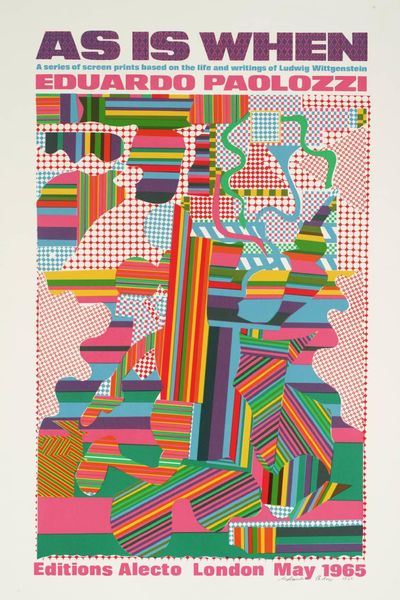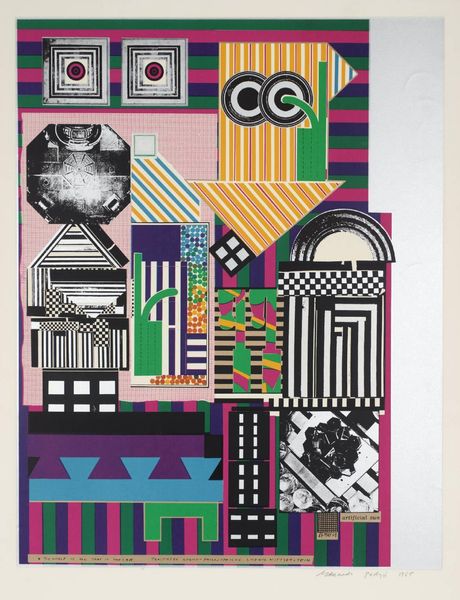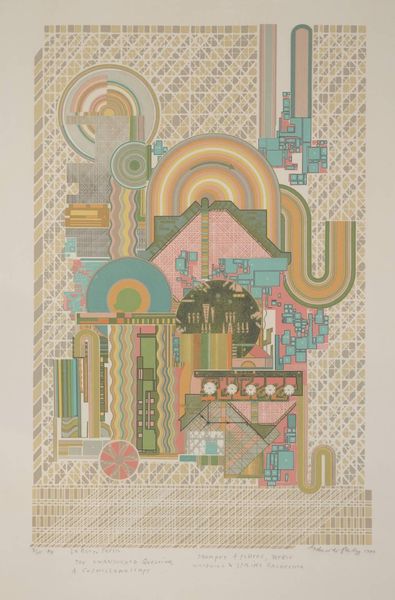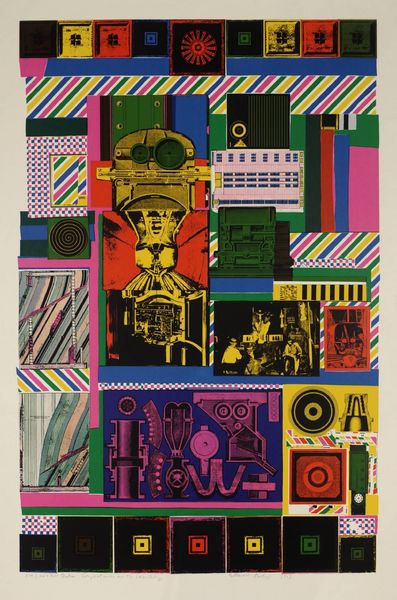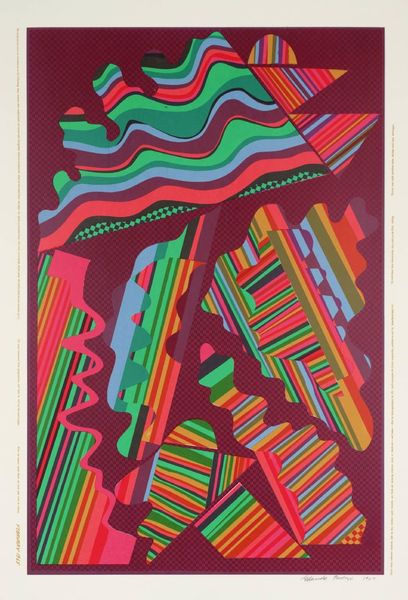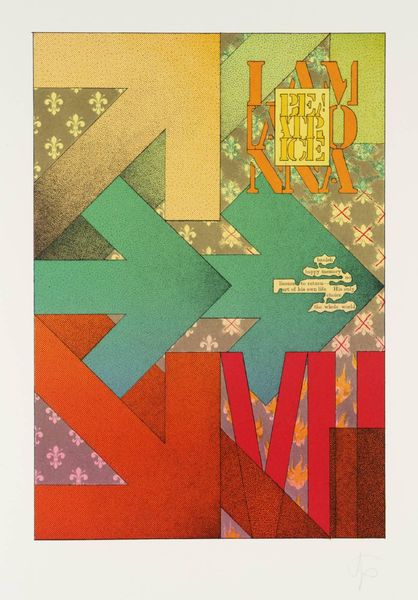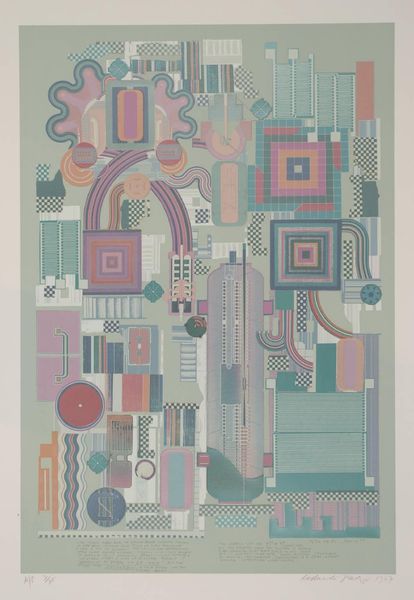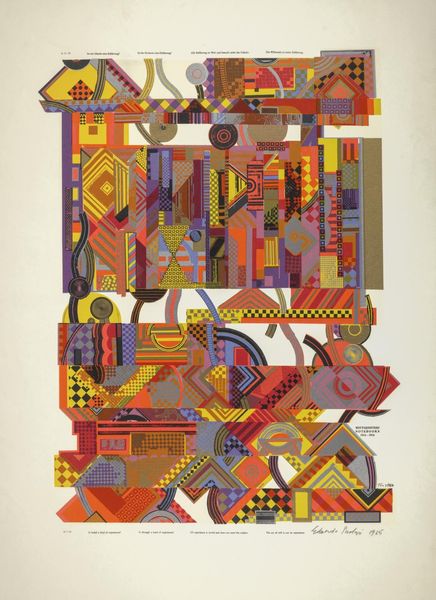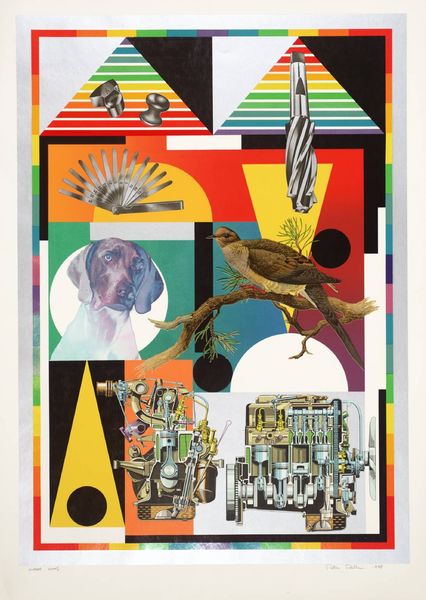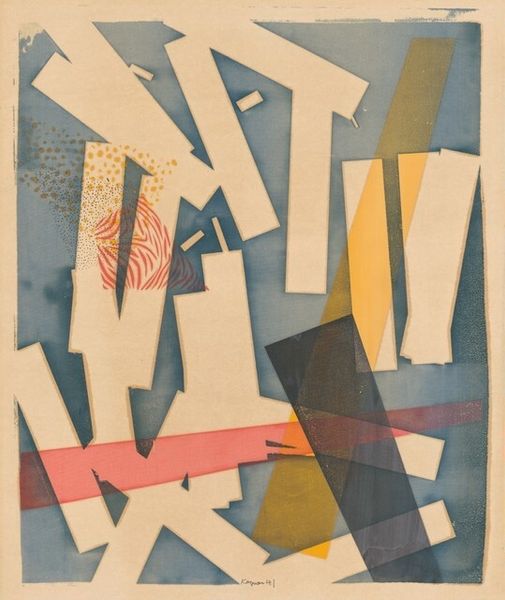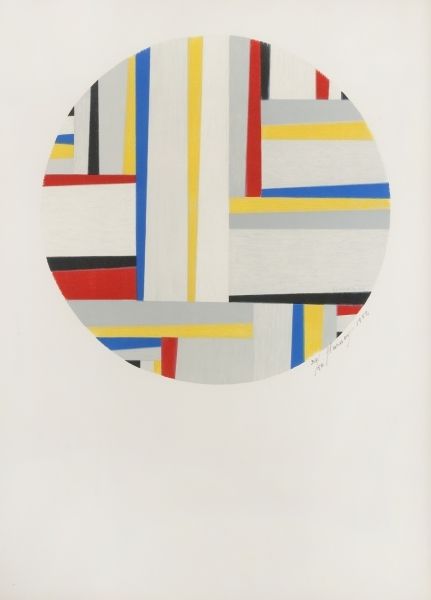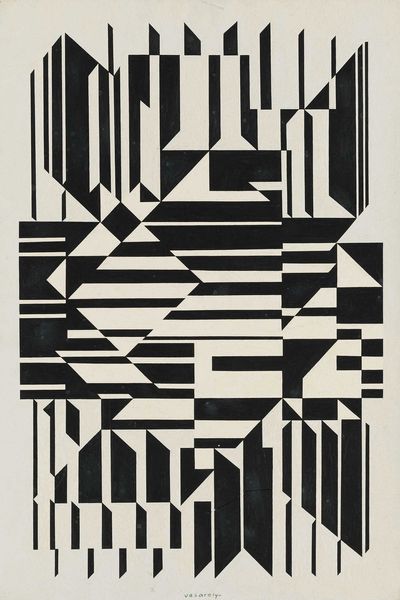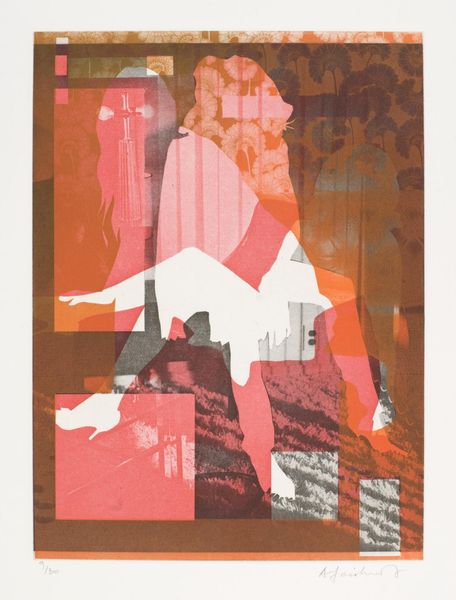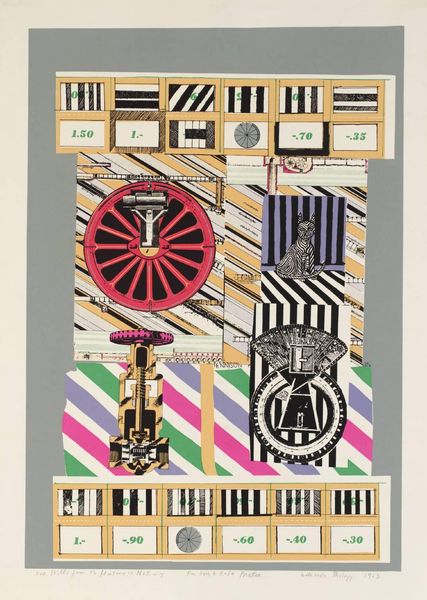
Dimensions: image: 833 x 503 mm
Copyright: © The Eduardo Paolozzi Foundation | CC-BY-NC-ND 4.0 DEED, Photo: Tate
Editor: This is Eduardo Paolozzi's "Wittgenstein at the Cinema Admires Betty Grable." It's a really vibrant image, but also quite chaotic. What sort of symbolic relationships do you see within this composition? Curator: The juxtaposition of Wittgenstein, a philosopher of logic and language, with Betty Grable, a pin-up icon, and even the inclusion of the airplane, speaks volumes. The airplane serves as a symbol of modernity, progress, and perhaps even the destructive forces of war. Do you think there is a connection? Editor: Perhaps, it's an interesting contrast to the more human elements. Curator: Indeed. Paolozzi seems to be exploring the emotional and psychological impact of popular culture and technology on the individual. The image seems to be an exploration of contrasts. What does that tell us about Paolozzi's mindset? Editor: It’s a lot to think about. I appreciate how you’ve highlighted the symbolic weight each image carries.
Comments
tate 7 months ago
⋮
http://www.tate.org.uk/art/artworks/paolozzi-wittgenstein-at-the-cinema-admires-betty-grable-p04766
Join the conversation
Join millions of artists and users on Artera today and experience the ultimate creative platform.
tate 7 months ago
⋮
The life and theories of the Austrian philosopher Ludwig Wittgenstein inspired this sequence of screenprints. Each print includes quotations from Wittgenstein''s own writings or passages from a biography. The collages of fragmented images relate to these texts. Paolozzi has described the prints as ''a kind of combined autobiography''. His Italian background led him to identify with Wittgenstein as ''a foreigner in England'', who shared an interest in engineering and a love of cinema. He has also drawn parallels between Wittgenstein''s theories of language and his own artistic practice. Gallery label, August 2004
